In the Eye of the Storm: Modernism in Ukraine, 1900-1930s
The Royal Museum of Fine Arts of Belgium in Brussels is currently hosting an exhibition titled In the Eye of the Storm: Modernism in Ukraine,...
Tommy Thiange 2 November 2023
5 October 2023 min Read
Karlo Zvirynskyi (1923–1997) was the true epitome of an underground artist. Having rejected the Soviet Union’s official socialist realist style, he secretly created modernist art and taught others. His first solo exhibition took place only two years before his death.
Karlo Zvirynskyi was born in 1923 in the village of Lavriv in the Carpathian Mountains in Western Ukraine, then part of Poland. Lavriv is known for its 13th-century St. Onuphrius Monastery. Zvirynskyi’s father worked at a sawmill at the monastery. Zvirynskyi himself worked there in his youth at a book bindery in the late 1930s and perused the monastery’s impressive library that would be destroyed by the Bolsheviks during World War II. This reading and the monastery itself were undoubtedly an important influence on him. He would always remain deeply religious and painted icons later in life.
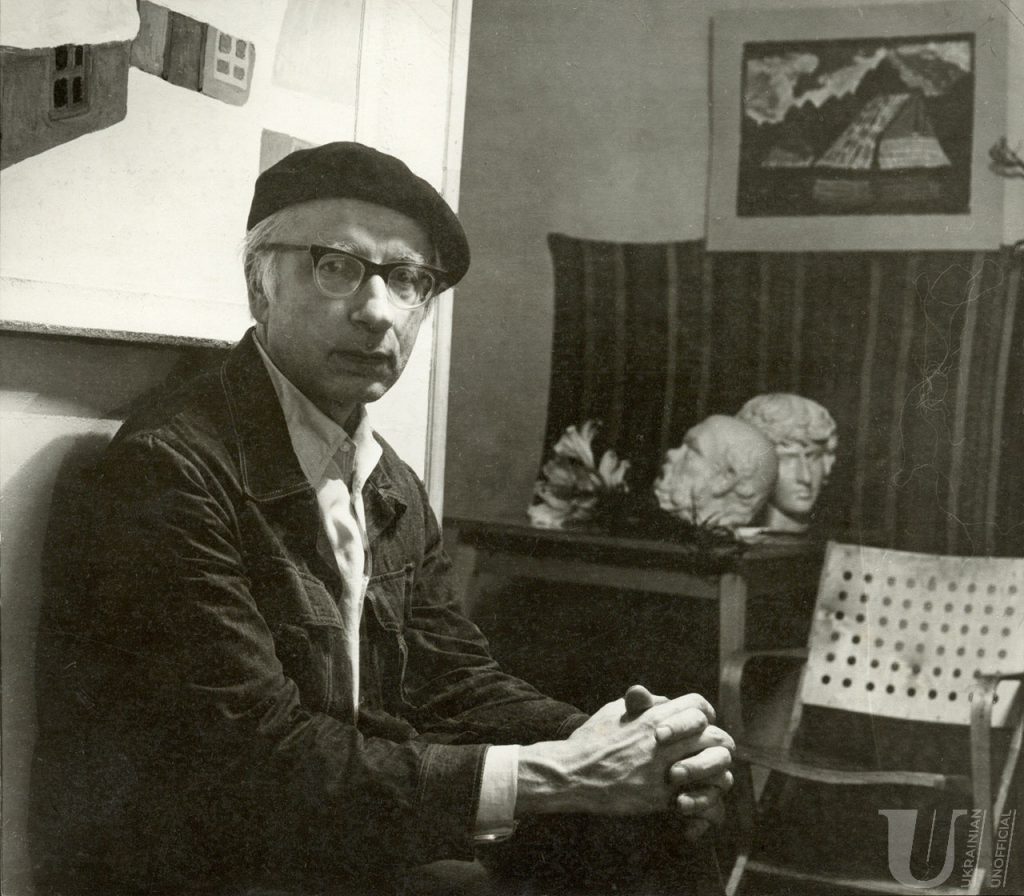
Karlo Zvirynskyi in 1965. Photo by Petro Hrytsyk. Courtesy of the author.
While under German occupation during the war, Zvirynskyi went to Lviv, the largest city in Western Ukraine, to study art. In 1945, then under the Soviet regime, he became a student of Roman Selskyi (1903–1990). Selskyi, who had studied in Kraków and Paris in the 1920s, wasn’t happy with the Communist Party’s views on art, which was supposed to follow the principles of socialist realism and avoid formalism and other “bourgeois” influences.
Selskyi’s apartment became a place for what was called an underground version of Parisian salons, where both older artists and their students discussed how modernist art could survive in the new reality. Some thought a compromise with socialist realism was possible, while for others a “deal with the Devil” was completely immoral and unacceptable.
For Zvirynskyi, these meetings in the late 1940s were a veritable initiation into Western art. The discussions influenced him so much that in 1949 he was expelled from college for one year for publicly stating that one apple of Cézanne was worth more than the whole socialist realist art.
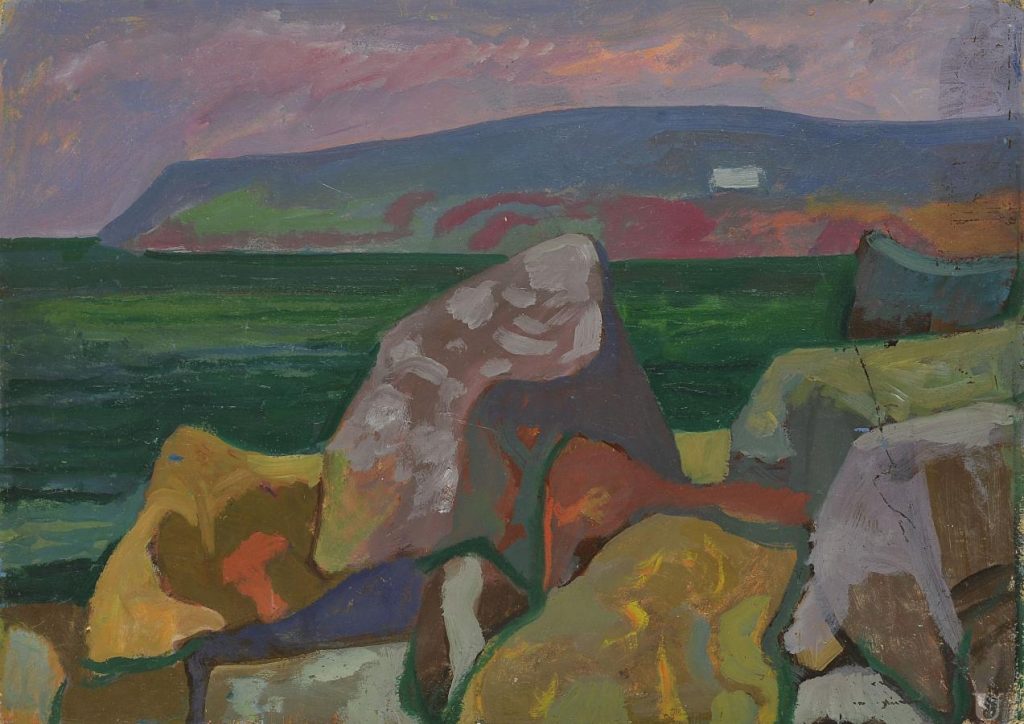
Karlo Zvirynskyi, Crimea, late 1950s, collection of Oleksii Kharko. Courtesy of Ukrainian Unofficial.
When in 1953 he became a professor himself, Zvirynskyi began inviting his students to his place for similar “unofficial” talks. In 1959 this grew into something bigger. It became an underground “academy” where he taught not only art, but also literature, music, history, religion, and philosophy. The meetings were held after dark, two or three times a week, in total secrecy—even Selskyi knew nothing about them. The resulting works of art were also exhibited clandestinely in various apartments in Lviv. The academy was active until 1966.
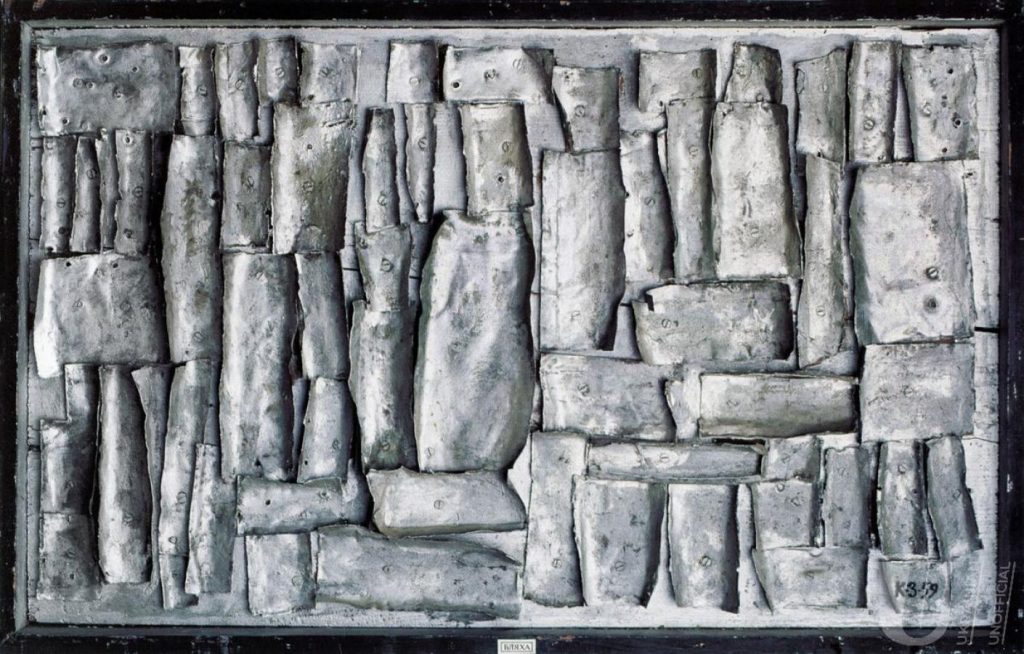
Karlo Zvirynskyi, Tinplate, 1959, metal sheet and paint on plywood, private collection. Courtesy of Ukrainian Unofficial.
Among the students of his underground academy were Ivan Marchuk (b. 1936), who in 2007 was included in The Telegraph’s Top 100 Living Geniuses; Oleg Minko (1938–2013), considered one of Ukraine’s best contemporary artists; Petro Markovych (b. 1937), nicknamed “Picasso from Lviv,” who has been living in the United States since 1991; as well as Oleksandra Krypyakevych-Tsehelska (b. 1944) and Stefania Shabatura (1938–2013), both Soviet-era political dissidents.
Zvirynskyi himself evolved as an artist while teaching others. His earlier works with noticeable impressionist influences, gave way to tactile “reliefs” made of wood, metal, plaster, and other materials. Later he shifted to more abstract and surrealist paintings. In the 1960s, his art became progressively more symbolist—with assemblages of seemingly random objects, each with profound personal, hermetic meaning—as well as metaphysical and spiritual.
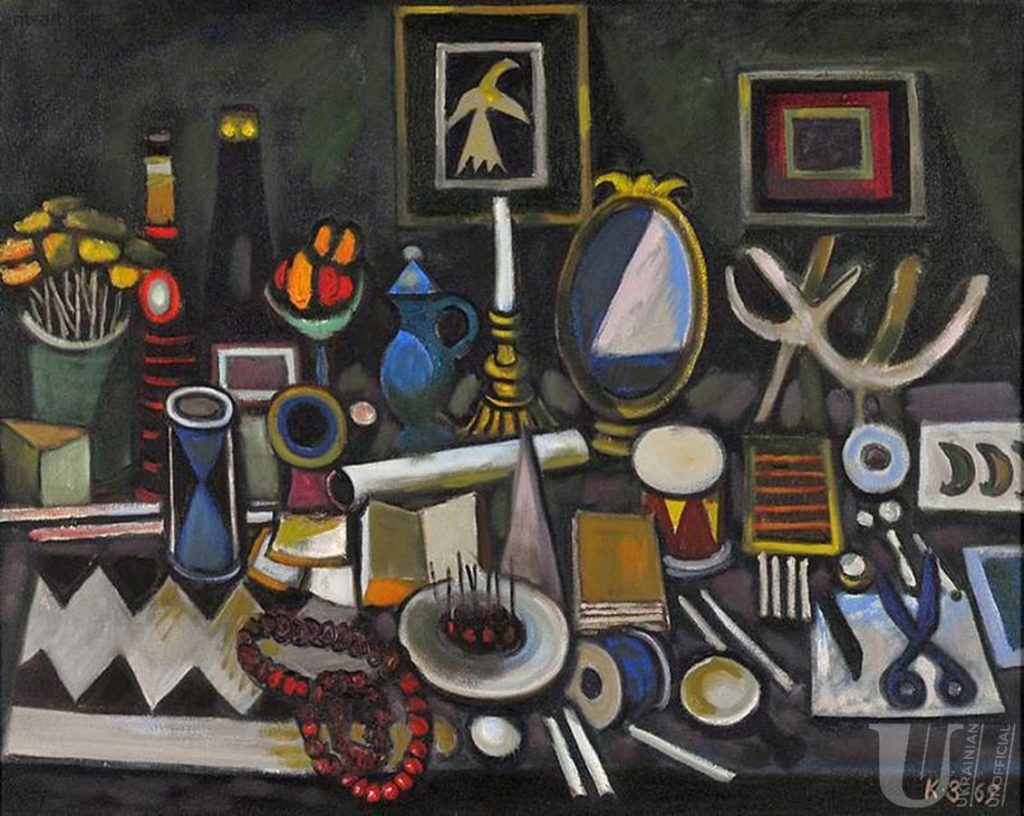
Karlo Zvirynskyi, Little Things, 1965, oil on canvas, private collection. Courtesy of Ukrainian Unofficial.
Zvirynskyi said that spirituality was topmost in his hierarchy of values, followed by societal considerations. Art was supposed to serve these two higher ideals. “Art is not the meaning of my life,” he said, contrasting himself with his teacher Selskyi, “but a means to express my attitude to life.”
And what was this attitude? He liked to paraphrase the apocryphal Gospel of Thomas: “I cleave a piece of wood and see Him there. I lift up a stone and find Him there.” He found God everywhere and tried to express his awe before His creation in his works. “All my art is a prayer,” he would say.
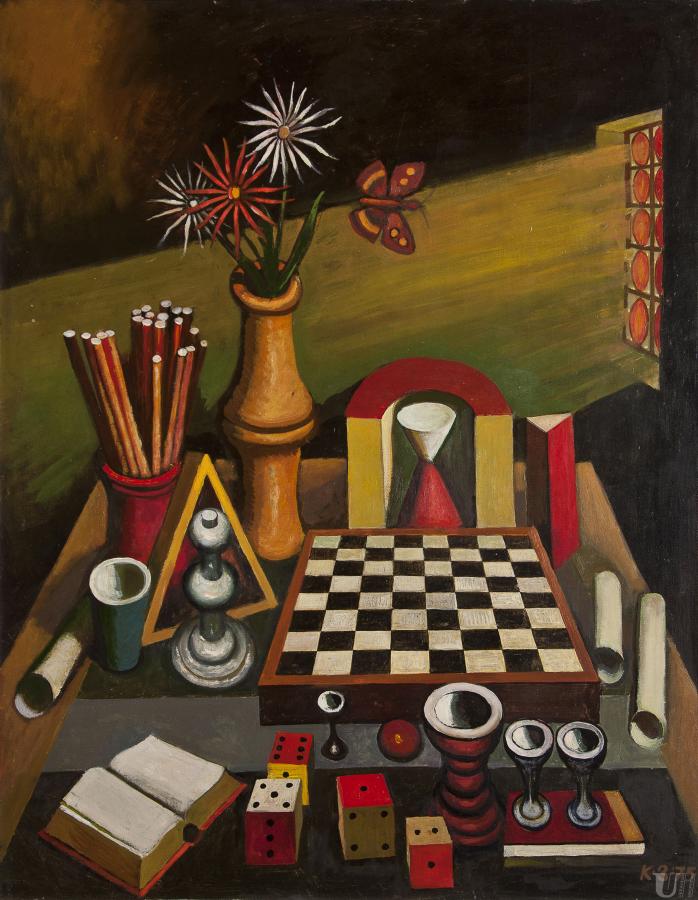
Karlo Zvirynskyi, Still Life with Butterfly (Toward Light), 1975, private collection. Courtesy of Ukrainian Unofficial.
Karlo Zvirynskyi only emerged from the underground and received recognition after the Soviet Union collapsed. His first official, public exhibition took place in 1995 at Lviv’s National Museum, where 58 of his artworks were presented. He passed away two years later, on October 8th, 1997.
Guest Author’s bio:
Roman Cherevko is a writer and translator from Ukraine. His articles and essays appeared in Porridge Magazine, Litbreak Magazine, Zbruč, “Stories from Ukraine: The True Price of War” (printed and e-book), and in his blog on Medium.
DailyArt Magazine needs your support. Every contribution, however big or small, is very valuable for our future. Thanks to it, we will be able to sustain and grow the Magazine. Thank you for your help!